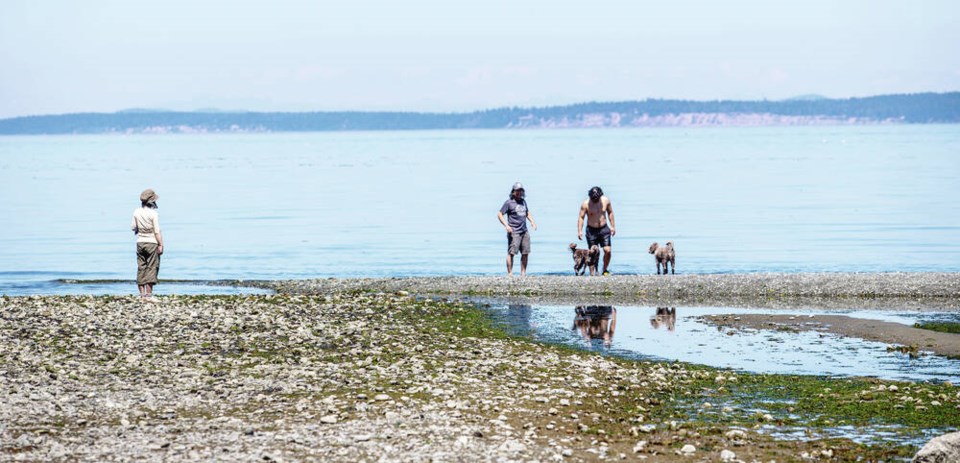Temperatures in the capital region are on their way up again and could reach the 30 C mark by early next week.
The impending heat prompted the B.C. Public Safety Ministry to issue a statement advising residents to have a heat plan ready, although it says an extreme-heat emergency is not expected.
A heat plan identifies cool zones in the home or at nearby community centres or libraries, and should include vulnerable family members and neighbours, the ministry said.
The province announced in June a system for issuing heat warnings and other government responses to heat emergencies, after the B.C. Coroners Service said more than 600 people died during the extreme heat wave last summer.
Environment Canada meteorologist Armel Castellan said capital region temperatures in the next few days are expected to be above the seasonal average, which is a daily high of 22 C with a low of 12 C overnight, he said.
Castellan said he expects temperatures to rise above the mid 20s on the weekend, with Sunday possibly reaching 28, and Monday and Tuesday getting closer to 30 C.
Still, it is on a “totally different scale” than last summer, when local temperatures topped out at 39.8, Castellan said.
Tanya Patterson, Victoria’s emergency program co-ordinator, said the city is keeping an eye on the expected jump in temperature and has an extreme-heat response plan “ready to go.”
She said level one for a heat warning comes into effect if the temperature is forecast to reach a high of 29 and an overnight low of 16 over the course of two days. At that point, the city would issue public information, including details of how to recognize heat exhaustion and heat stroke, Patterson said.
“We would likely also activate our misting stations, and put out maps of where all the misting stations and water fountains are.”
The stations spray mist through a pipe system, fed by fire hydrants, that has been designed and built by city workers. The maps are distributed through the city’s website and social media, she said.
If the heat lasts or increases for three or more days, it would be deemed an extreme-heat emergency, prompting activation of the city’s cooling centres, which have air conditioning, Patterson said.
Among them are the Cook Street Activity Centre, Save-on-Foods Memorial Centre and the Salvation Army Addictions and Rehabilitation Centre.
— With a file from The Canadian Press



